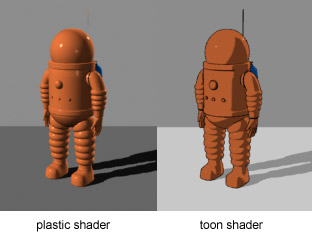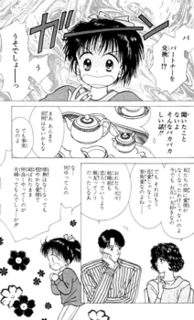Related Research Articles

Plastic surgery is a surgical specialty involving the restoration, reconstruction, or alteration of the human body. It can be divided into two main categories: reconstructive surgery and cosmetic surgery. Reconstructive surgery includes craniofacial surgery, hand surgery, microsurgery, and the treatment of burns. While reconstructive surgery aims to reconstruct a part of the body or improve its functioning, cosmetic surgery aims at improving the appearance of it.
Kevyn James Aucoin was an American make-up artist, photographer and author. In the 1990s, Aucoin was wholly responsible for the "sculpted" look of many celebrities and top models, including Whitney Houston, Cher, Madonna, Cindy Crawford, Liza Minnelli, Courtney Love, Tina Turner, Janet Jackson, Naomi Campbell, Tori Amos, and Vanessa Williams. He authored several industry-defining books with makeup techniques including facial contouring, which was relatively unknown in popular culture at the time, but pioneered and used in drag culture and stage makeup for decades prior. Aucoin, often noted as being decades ahead of his contemporaries, is considered to be one of greatest make-up artists of the modern age.

Cosmetics are constituted mixtures of chemical compounds derived from either natural sources, or synthetically created ones. Cosmetics have various purposes. Those designed for personal care and skin care can be used to cleanse or protect the body or skin. Cosmetics designed to enhance or alter one's appearance (makeup) can be used to conceal blemishes, enhance one's natural features, add color to a person's face, or change the appearance of the face entirely to resemble a different person, creature or object. Cosmetics can also be designed to add fragrance to the body.

Prosthetic makeup is the process of using prosthetic sculpting, molding and casting techniques to create advanced cosmetic effects. Prosthetic makeup goes back to the beginning of film making with A Trip to the Moon, a 1902 French adventure short film directed by Georges Méliès where the man on the moon effect was accomplished using a combination of makeup and a prosthetic type mask with added pastes. The makeup artist Jack Pierce was another early Hollywood make-up artist, best remembered for creating the iconic makeup worn by Boris Karloff in Frankenstein, his makeup for the Wolfman, and more. Modern prosthetic makeup was revolutionized by John Chambers, whose work can be seen in Planet of the Apes, as well as Dick Smith's work in Little Big Man, Stan Winston in the Terminator series, and Rob Bottin in The Thing.

Cel shading or toon shading is a type of non-photorealistic rendering designed to make 3-D computer graphics appear to be flat by using less shading color instead of a shade gradient or tints and shades. A cel shader is often used to mimic the style of a comic book or cartoon and/or give the render a characteristic paper-like texture. There are similar techniques that can make an image look like a sketch, an oil painting or an ink painting. The name comes from cels, clear sheets of acetate which were painted on for use in traditional 2D animation.
Max Factor is a line of cosmetics from Coty, Inc. It was founded in 1909 as Max Factor & Company by Maksymilian Faktorowicz.
A facial prosthetic or facial prosthesis is an artificial device used to change or adapt the outward appearance of a person's face or head.

Rouge, also called blush or blusher, is a cosmetic for coloring the cheeks in a variety of shades, or the lips red. It is applied as a powder, cream or liquid.

The Ben Nye Makeup Company was started in 1967 by Hollywood film industry makeup artist Ben Nye. Its current CEO is Nye's son, Dana Nye. The company is a family-owned business that is dedicated to serving professionals throughout the world. In 2017, The Ben Nye Makeup Company celebrated their 50-year anniversary.
Restylane is the trade name for a range of injectable fillers with a specific formulation of non-animal sourced hyaluronic acid (HA).

The history of cosmetics spans at least 7,000 years and is present in almost every society on earth. Cosmetic body art is argued to have been the earliest form of a ritual in human culture. The evidence for this comes in the form of utilised red mineral pigments including crayons associated with the emergence of Homo sapiens in Africa. Cosmetics are mentioned in the Old Testament—2 Kings 9:30 where Jezebel painted her eyelids—approximately 840 BC—and the book of Esther describes various beauty treatments as well.

Japanese manga has developed its own visual language or iconography for expressing emotion and other internal character states. This drawing style has also migrated into anime, as many manga stories are adapted into television shows and films. While this article addresses styles from both types of output, the emphasis here is on the manga origins for these styles.

Foundation is a liquid, cream, or powder makeup applied to the face and neck to create an even, uniform color to the complexion, cover flaws and, sometimes, to change the natural skin tone. Some foundations also function as a moisturizer, sunscreen, astringent or base layer for more complex cosmetics. Foundation applied to the body is generally referred to as "body painting" or "body makeup".

Theatrical makeup is makeup that is used to assist in creating the appearance of the characters that actors portray during a theater production.
Ombré is the blending of one color hue to another, usually moving tints and shades from light to dark. It has become a popular feature for hair coloring, nail art, and even baking, in addition to its uses in home decorating and graphic design.
Microblading is a tattooing technique and form of permanent makeup in which a small handheld tool made of several tiny needles is used to add semi-permanent pigment to the skin. Microblading differs from standard eyebrow tattooing, as each hairstroke is created by hand using a blade which creates fine slices in the skin, whereas eyebrow tattoos are done with a machine and single needle bundle. Microblading is typically used on eyebrows to create, enhance, or reshape their appearance in terms of both shape and color. It deposits pigment into the upper region of the dermis, so it fades more rapidly than traditional tattooing techniques, which deposit pigment deeper into the skin. Microblading is also sometimes called embroidery, feather touch, microstroking, 3D eyebrow embroidery, or hair-like strokes.

Korean beauty standards have become a well-known feature of Korean culture. In 2015, a global survey by the International Society of Aesthetic Plastic Surgeons placed South Korea in the top ten of countries who had the highest rate of cosmetic surgeries. Korean beauty standards prioritize a slim figure, small face, v-shaped jaw, pale skin, straight eyebrows, flawless skin, and large eyes. Beauty standards for the eyes include aegyo-sal, which is a term used in Korea referring to the small fatty deposits underneath the eyes that are said to give a person a more youthful appearance. East Asian blepharoplasty is a surgery to create double eyelids which makes the eyes appear larger. Korean beauty standards have been influenced largely by those in the media, including actresses, TV personalities, and K-pop stars. The physical appearance of K-pop idols has greatly impacted the beauty standards in Korea.
Baking, also known as "cooking", is a make-up technique originally used in Drag, now popularised by celebrities and make-up artists. This technique includes applying a heavy amount of translucent powder under the eyes and on the high points of the face, including the 'T' zone, to set the base make-up. It is also used to extract oils from the face.

Highlighter is a type of cosmetic product that reflects light. Often used for contouring, it can be applied to the face or other parts of the body to brighten the skin on a given area, create the perception of depth and angles. The product can come in a variety of forms, including powder, liquid, cream, gloss, solid stick and jelly.
Male grooming refers to men paying attention to fashion and enhancing their own appearance. This interest has become increasingly apparent in popular culture.
References
- ↑ Picardi, Phillip (2014-01-24). "So: What Is Contouring and Why Should You Care?". Teen Vogue. Retrieved 2016-01-18.
Contouring is giving shape to an area of the face and enhancing the facial structure through makeup
- 1 2 Schwedel, Heather (24 February 2017). "On the Oscars Red Carpet, Keep an Eye Out for Boob Contouring". Slate. Retrieved 25 February 2017.
- 1 2 3 4 5 6 7 "From 1500 to 2015: The Fascinating History of Contouring". Byrdie. Retrieved 2016-03-19.
- ↑ "Here's What You Might Not Know About the History of Contouring - Makeup Contour TikTok". www.lofficielusa.com. 2021-06-17. Retrieved 2021-07-31.
- 1 2 Shapiro, Bee (2017-10-11). "We're Living in the Golden Age of Contouring". The New York Times. ISSN 0362-4331 . Retrieved 2021-07-31.